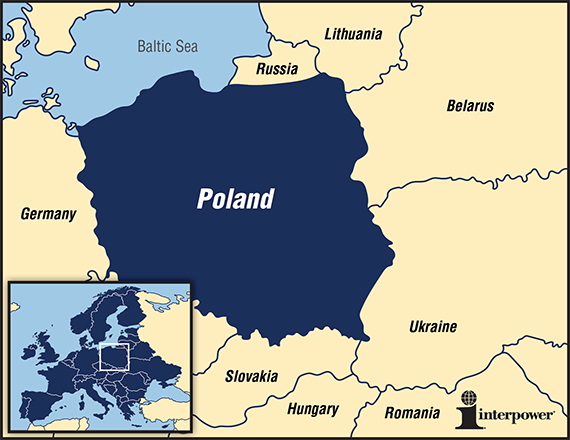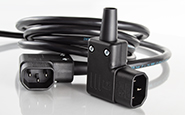Exporting to Poland

| POLAND | |
|---|---|
| Actual population* | Population world ranking |
| 38,346,279 | 35 |
| Actual GDP (PPP)* | GDP world ranking |
| $814 billion | 22 |
| Actual GDP (per capita)* | GDP (per capita) world ranking |
| $21,100 | 69 |
*See the end of this blog for definitions
Emerging as an active market in the European Union, Poland offers various trade opportunities with positive potential for markets.
Targeting specific niches is one market entry strategy to use, along with follow-up promotion and sales support. It should be noted that there is a wide population distribution in Poland between urban and rural. Personal contacts and finding a local agent or distributor are other potential market entry strategies. Pricing is a significant factor when offering a product or service in Poland.
Knowing business customs that are acceptable in Poland will enhance a company’s chance for success. For example, know what is proper when greeting someone, including the proper way to shake hands and address a person, especially when meeting for the first time. Have a good supply of business cards to distribute. Also know what is acceptable as business hours as well as when the Polish holidays are—this will assist in choosing the best time to schedule meetings. Business attire is generally recommended to be formal.
Different resources, such as the United States Commercial Service and the United Kingdom Trade and Investment, are available to find out more information about doing business in Poland, market entry strategies, business customs, and import/export requirements. Another resource is the Polish Information and Foreign Investment Agency’s “Invest in Poland.”
Located in Eastern Europe, Poland joined the European Union in 2004. The EU is a Customs Union which consists of member countries who have formed a single region for customs purposes. Goods that have been imported legally can circulate throughout the EU with no further customs checks. To learn more about the customs regulations, among the sources to consult are the European Commission Export Helpdesk and European Commission Taxation and Customs Union. Conducting due diligence in accordance with all of the regulations is essential.
Some products may require safety testing and certification for this market. While not all products are required to have a CE mark, others do require one. When affixing the CE mark to a product, a manufacturer affirms that the product meets the necessary requirements and can be sold throughout the EU.
There are also EU regulations that need to be followed, so it’s important to know what is required in Poland. Among them are:
- REACH is the European regulation for Registration, Evaluation, Authorization, and Restriction of Chemicals. The European Commission works closely with ECHA (European Chemicals Agency) in the implementation of this regulation.
- RoHS stands for Restriction of Hazardous Substances. It restricts the use of certain hazardous materials found in electrical and electronic products.
- WEEE stands for Waste from Electrical and Electronic Equipment. WEEE requires the treatment, recovery, and recycling of electric and electronic equipment.
Polish is the official language. Since all communication should be in Polish, it’s recommended to use quality translators for conducting business.
In Poland, the voltage used is 230V at 50Hz. The most frequently specified plug pattern is the Continental European plug.
Sources:
www.export.gov/poland
www.gov.uk
www.paiz.gov.pl/en
Sources for European Union:
www.ec.europa.eu
www.echa.europa.eu
www.rohsguide.com
www.exporthelp.europa.eu
www.europa.eu
www.export.gov/europeanunion
*Source: www.cia.gov/library/publications/the-world-factbook/index.html
Country comparison—Population: Population compares estimates from the US Bureau of Census based on statistics from population censuses, vital statistics, registration systems, or sample surveys pertaining to the recent past and on assumptions about future trends. (July 2014 est.)
Country comparison—GDP (Purchasing Power Parity): GDP (purchasing power parity [PPP]) compares the gross domestic product (GDP) or value of all final goods and services produced within a nation in a given year. A nation’s GDP at PPP exchange rates is the sum value of all goods and services produced in the country valued at prices prevailing in the United States. (2013 est.)
Country comparison—GDP – per capita (PPP): GDP – per capita (PPP) compares GDP on a purchasing parity basis divided by population as of 1 July for the same year. (2013 est.)






